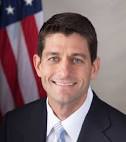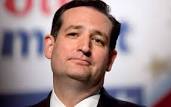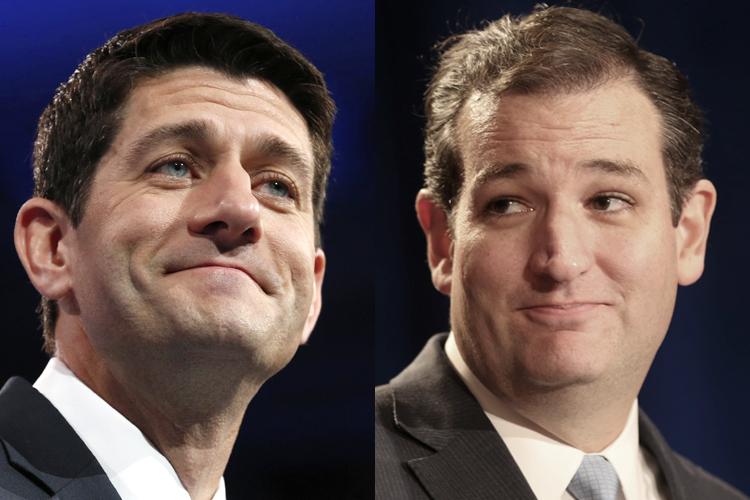In yesterday’s Part I of this ongoing story, we identified the two “large” groups that have staked out positions in this new war we are in: Liberals and Conservatives. But before we get into the meat of how this war is playing out today and will be fought in the days and months ahead, we need to breakdown who the major players are in each of these two groups. Some are obvious; some are hidden. And those who are hidden are purposefully hidden. Let’s look at Conservatives first.
We all know the stigma borne forever by Conservatives. The Republican Party is the “Grand Old Party” primarily known as the party for all Conservatives. But even though most Conservatives find themselves part of the GOP either formally or just ideally, there are drastic differences between Conservatives.
For years the GOP was defined by ultra-conservatives who walked a straight line on all major issues: taxes, spending, size of government, federal debt, healthcare, the military, pro life/pro choice, and foreign policy. But somewhere in the second half of the last decade, a rift in conservative policy thinking began to grow. On one side of that divide was the “Establishment Republicans” and the other side was the “Modern or Hard Line Republicans” that later became known as “Tea Partyers.” Establishment Conservatives wanted all historical Republican policies kept “as is.” The Tea Party side of the GOP wanted even tighter policies, primarily in all things related to government spending and policy decisions that related to economic issues for Americans. In the 2016 Presidential campaign due to the number of major candidates, both extremes were on show for all to see.
Then in walks Donald Trump: he’s NOT establishment and he’s NOT Tea Party. Trump is a hybrid conservative who holds policy pieces from both sides. He’s a “Populist Republican.” His views are definitely not party related nor are they built on GOP platform planks. They are built around his personal views that have evolved through the years. He formerly was a middle to slightly left Democrat.
One reason why many Americans — especially middle class, working blue collar Americans — identify so readily with Trump and ultimately elected him is that they feel the same way as Trump about Conservatism. Their views are not straight down the line with either conservative perspective but have through time adopted policy positions from the Establishment and from the Tea Party. And in most cases they have taken that one step further: to Conservative Populism. That’s how Trump tipped the scales in Wisconsin, Michigan, Ohio, and Pennsylvania. Average Americans who have for years held their noses when the pulled the lever in federal elections finally found a candidate that they could say, “I kinda agree with what this guy says. He talks like I feel.” It is difficult for middle class Americans to relate to wealthy men and women in leadership in D.C. And it’s even more difficult for Americans to trust that these people can even relate to them. Trump may just be a good salesman, but he convinced Americans and he shocked the World. Quite honestly, if you threw voting results out for the states of California, New York, Illinois, and Massachusetts, Trump would have dominated the election.
With Donald Trump sworn in as President you would think Conservatives would be ecstatic for the victory and would join hands around the merry-go-round laughing, dancing, and singing together. Nothing could be further from the truth. The political war is on, and not just between Parties — between Conservatives.
 Conservatives in Congress have chosen sides and are picking fights — fights even with the President. On one side are the likes of House Speaker Paul Ryan who is the embodiment of Establishment GOP rules. Many watched in horror as in the runup to the election he distanced himself from the GOP candidate and never formerly endorsed him. When has it ever happened that a sitting House Speaker would not support the party’s candidate? It was obvious that Ryan would have much preferred one of the 18 other candidates to get the nod. I think he felt he could more easily “steer” any one of them in the Establishment direction. And when that did not happen his hair caught on fire. Thankfully it seems in most areas he has come around to the “Trump” side of this new governing era. We’ll see how it plays out. But don’t think for a minute there a House legislative laydown by either the Speaker or the President.
Conservatives in Congress have chosen sides and are picking fights — fights even with the President. On one side are the likes of House Speaker Paul Ryan who is the embodiment of Establishment GOP rules. Many watched in horror as in the runup to the election he distanced himself from the GOP candidate and never formerly endorsed him. When has it ever happened that a sitting House Speaker would not support the party’s candidate? It was obvious that Ryan would have much preferred one of the 18 other candidates to get the nod. I think he felt he could more easily “steer” any one of them in the Establishment direction. And when that did not happen his hair caught on fire. Thankfully it seems in most areas he has come around to the “Trump” side of this new governing era. We’ll see how it plays out. But don’t think for a minute there a House legislative laydown by either the Speaker or the President.
Senator Ted Cruz seems to bear the leadership role of the Tea Partyers, still wanting really stiff new policies from this  Administration — far stiffer and much wider ranging than those expected by the Establishment. His dramatic loss to Trump in the primaries slightly diminished his political might, but late in the race Cruz came around to quietly support Mr. Trump, but not for his agreement with Trump policies but rather to defeat Clinton. Since Trump’s election, Cruz has embarked on the path of presidential support in legislation even though many feel his support is to primarily keep himself in the GOP limelight that will move him into line for the top spot on the 2020 GOP ticket.
Administration — far stiffer and much wider ranging than those expected by the Establishment. His dramatic loss to Trump in the primaries slightly diminished his political might, but late in the race Cruz came around to quietly support Mr. Trump, but not for his agreement with Trump policies but rather to defeat Clinton. Since Trump’s election, Cruz has embarked on the path of presidential support in legislation even though many feel his support is to primarily keep himself in the GOP limelight that will move him into line for the top spot on the 2020 GOP ticket.
I know today’s chapter in this story of our political war was not really juicy or gossipy, but it was meant to simply illustrate the factions in the GOP, how they differ, how close we came to seeing America going extreme Left, but to show how the Conservatives in America stopped the Liberal slide. Get ready: tomorrow and the next day’s chapters are so radical and revealing, you will gasp when you read the information I will give you. And you’ll know that for certain, we ARE at war. And it is NOT going to end any time soon. (The players involved and their roles as we move forward with this will shock you!)
Stay tuned!


Dan you might check into this…
https://cpc-grijalva.house.gov/